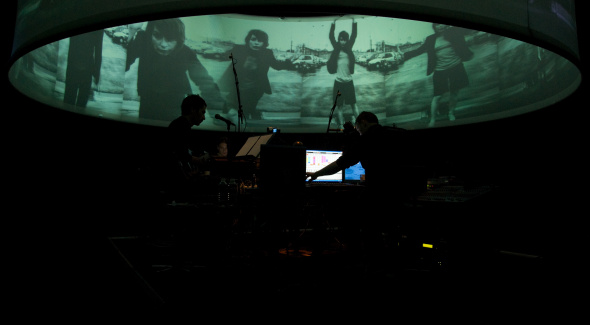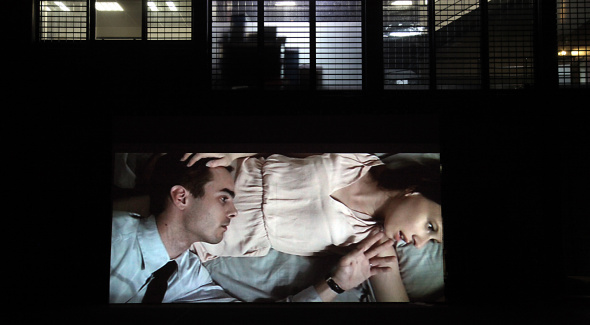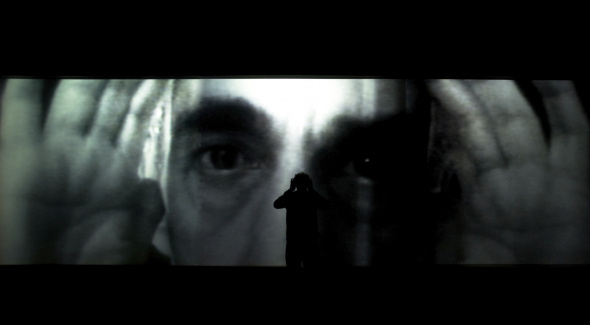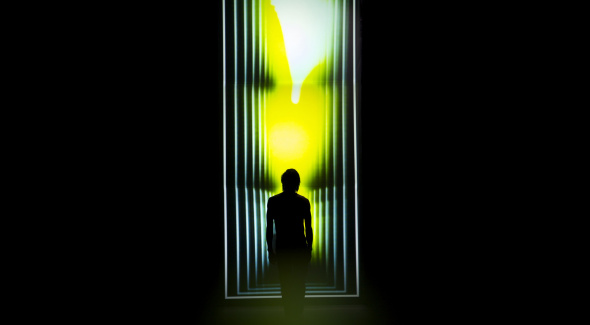Cyril Teste
Born in 1975, Cyril Teste was initially interested in the visual arts before being drawn to theatre.
He studied at the École Régionale d’Acteur in Cannes, then at the CNSAD de Paris, and in 2000, founded Collectif MxM. His work has featured in festivals such as the 58th and 65th editions of the Festival d’Avignon, the Festival Européen Temps d’Images – Arte at LA Ferme du Buisson, the CENTQUATRE Paris, and the Festival International du Cinéma Méditerranéen in Montpellier. Cyril Teste and Collectif MxM (comprising actors, videographers, a composer, a playwright, a cameraman and a lighting engineer, their involvement depending on the show or project) are partner-artists with the CENTQUATRE-Paris, the Canal-Théâtre Intercommunal of Redon, and the Lux-Scène Nationale, Valence.
Since 2011, Cyril Teste and Collectif MxM have been working on the concept of film or cinematic performance (shooting, editing, calibration and mixing in real time under the public’s gaze). Three film performances have been created in this fashion: Patio (2011), Park (2012) and Nobody (2013).
If their approach has sometimes been hastily labelled as “New Writing” or “New Technologies,” it is above all intended to be poetic and visual, and the technologies being explored here are required to participate in a new form of poetry on stage, sometimes through incompleteness or alteration, or indeed, through the acceptance of spaces perhaps already empty themselves.
Here, video is, and will be simply a component of theatre, cohabiting with sound, light and acting. As a result, the stage truly opens up, through very subtle relationships between the artificial and the living, thereby becoming the laboratory of invention of emerging forms of writing, for example via the implementation of an interactive cinematic device.
Digital tools, spaces of interaction or augmentation however, should not in any way be limited or reduced to being dramaturgical prostheses but instead must find their intrinsic necessity on the stage and contribute to the attempts to develop a “new language” or rather a “living language.”
Indeed, in the work of director Cyril Teste, the image summons up words in singular fashion. It is, in the end, from the image that the playwright will issue a thought, a word. Often unconscious, this image, constructed in real time on the stage, “speaks” for itself, and gradually becomes the architectural element of a space which is more globally indicative of meaning. It is also through the image that we are given the possibility to observe the passage of time, revealing in the process that which is not always visible or audible.
“Japanese poets knew how to express their relationship to reality. They did not simply observe it but, calmly and without futile agitation, reflected on it and its eternal meaning. The more precise the observation, the more it is unique, and the more it resembles the image. Dostoyevsky used to say, quite rightly, that life is more extraordinary than fiction.” Andrei Tarkovsky on the subject of haikus, in Le temps scellé. Cahiers du cinéma, Paris, 1989.
And for Cyril Teste, the question of time is central: it is a profound part of our private self, the part of us that gradually escapes the writing of an image or a word. So how can we make the world around us talk? How can we track the sounds of ambient History, and how do we focus on more intimate or more underground stories? This also entails the questioning of poetic spaces in resonance with a dramatic writing of the times. Moreover, what are the stories, the writings, we need for today’s stage?
In resonance with all of these questions which are at the heart of his approach as an artist and director, this year Cyril Teste began developing new spaces for experimentation, notably in collaboration with IRCAM, around the creation of a “virtual greenhouse,” in the form of an immersive 3D installation. He has continued to pursue his work around the question of ephemeral cinema and its modes of representation in public (cinematic performance).
By accepting to come to Le Fresnoy this coming season, Cyril Teste’s main, generous concern is to establish a new place of exchange and research with young artists around the multitude of questions that concern him. Hence this magnificent idea: how do you make passing time visible in the interior of a space, like so many potential utopias?
Cyril Teste and Eric Prigent







